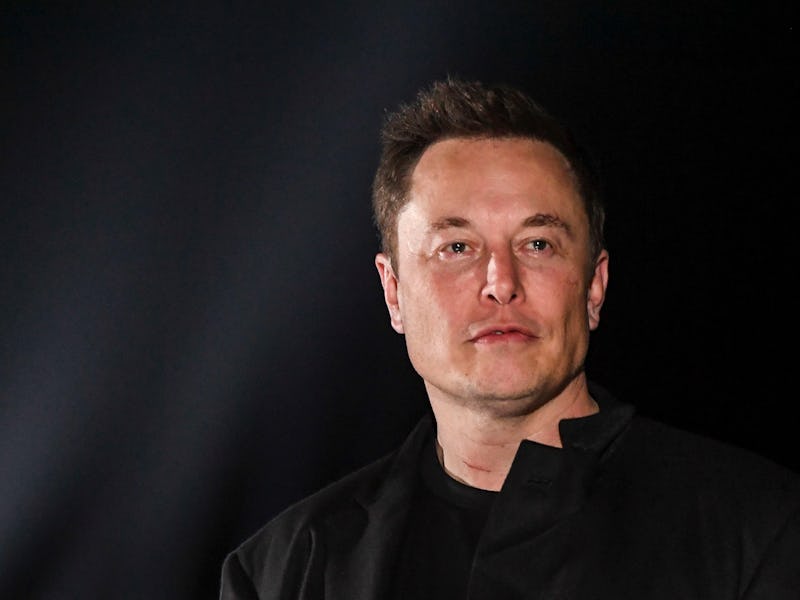Starlink coverage update and more: 6 biggest takeaways from Elon Musk's Code chat
Elon Musk made an appearance with Kara Swisher at the Code conference. Here's what you need to know.

Ready to go to space? The Tesla Roadster shows how you, too, could visit soon.
In a wide-ranging interview with Kara Swisher at the 2021 Code Conference on Tuesday, liveblogged by The Verge, SpaceX CEO Elon Musk outlined his dreams of a much larger Starlink constellation, far cheaper spaceflights, and even a giant Starship-powered telescope. And perhaps unsurprisingly, Musk couldn’t resist a jab at Blue Origin.
Want to find out more about SpaceX’s future plans? Subscribe to MUSK READS+ for exclusive interviews and analysis about spaceflight, electric cars, and more.
Here are the six biggest takeaways from Musk’s appearance:
6. Blue Origin and SpaceX? It’s complicated
Musk had mixed words for Jeff Bezos. He praised the Blue Origin founder, alongside Richard Branson, for spending money on space travel.
He noted, however, that “suborbital is a step in the direction of orbit,” an apparent dig at how Blue Origin and Virgin Galactic only reached suborbital heights when they hosted their first crewed missions in July. He also made a subtle dig at New Shepard, Blue Origin’s rocket, which has a somewhat questionable shape.
Blue Origin’s New Shepard rocket taking off.
Musk even made a jab at Blue Origin’s lawsuit against NASA, filed in August after the agency awarded a lunar lander contract to SpaceX.
“You cannot sue your way to the Moon!” he said.
5. Inspiration4: The Tesla Roadster of space travel
Inspiration4, SpaceX’s first all-civilian mission and the first ever to orbit, made headlines worldwide. But the price tag of such civilian missions suggests they’re out of reach for regular people — Virgin Galactic only reaches suborbital heights, but the company previously charged a staggering $250,000 per ticket.
Musk rejected the term tourism to an extent and suggested these early, expensive flights would pave the way for cheaper missions.
"I think it's got a bit more gravitas, metaphorically and figuratively, than tourism,” he said. "There's an element of tourism to it, but technology is also expensive at first."
He compared the flights to the early cellphones, which were expensive but paved the way for future, cheaper missions. He also compared it to the upcoming Tesla Roadster, which will start at $200,000. These products aren’t the mass-market model, but help fund the future version.
4. Starship will transform space
SpaceX’s under-development rocket, expected to host its first orbital flight this year or next, is designed to transport the first humans to Mars and back. SpaceX also designed it to take over existing missions from the Falcon 9 and Falcon Heavy rockets.
On that note, Musk claimed the new ship would offer 10 times more payload capacity at a price 15 times lower. In total, Musk suggested Starship would maybe cost around one percent the price of an expendable rocket.
The ship could be SpaceX’s first fully-reusable rocket — Falcon 9 is mostly reusable, as SpaceX saves the expensive booster. Musk described the fully-reusable ship as the “holy grail.”
3. Moon colony? Why not!
Musk is focused on his goal of building a self-sustaining city on Mars, but he suggested “we might as well” build a Moon colony.
He added that there is “a lot we could learn” about “the nature of the universe” with a base on the Moon.
The Moonbase concept has come up before. At the International Astronautical Congress in Adelaide, Australia, in 2017, Musk suggested it could be called Moon Base Alpha. He also released concept art of how the colony could look:
Concept art of Musk's Moon base.
Paul Wooster, SpaceX’s principal Mars development engineer, explained in 2019 that the Starship enables SpaceX to build both Moon and Mars bases simultaneously — no need to choose.
2. Starlink is aiming big
Musk confirmed that SpaceX aims to launch 30,000 Starlink satellites. SpaceX designed the internet connectivity constellation, which entered beta testing last year, to provide high-speed and low latency access almost anywhere in the world.
SpaceX has launched over 1,000 satellites so far. Musk warned, however, that it’s not going to replace your fast home fiber connection — this is more for rural and underserved communities.
“[It’s] not a threat to 5G or fiber or anything like that,” he said. He made similar comments last year.
1. New telescopes
SpaceX is considering plans to launch a telescope with 10 times the resolution of the Hubble Space Telescope. ESA notes that, if Hubble looked at the Earth from its approximately 373-mile orbit, it could see sharply up to around one foot in length.
Musk suggested this idea in July, using the Starship as the telescope.
Musk's proposal.
SUBSCRIBE TO MUSK READS+, A PREMIUM NEWSLETTER THAT COVERS THE WORLDS OF ELON MUSK, SPACEX, TESLA, AND EVERYTHING BETWEEN.
This article was originally published on